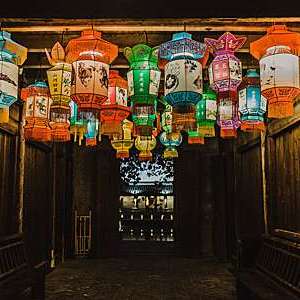Under the supervision of Prof. Song Mingshun, Chair of ISO/TC 3211), a team at China Jiliang University2) has developed a health code using smartphone-based technology. It makes use of QR codes to identify those at risk of spreading infection, who should be isolated, and those who can move freely.
With the support of the Alibaba Group, Hangzhou drew on its experience of areas such as the digital economy as well as its accumulated practice of “City Brain” construction, applying big data to the field of epidemic prevention and control.
The result is a new “health code standard”, Guide to the management and service of Hangzhou health code – DB 3301/T 0305-2020. By combining big data, mobile communication technology and Internet technology to conduct risk classification, QR codes are generated and assigned to individuals based on their health status under specific circumstances.
 The app assigns codes on a traffic-light principle: red, yellow and green codes corresponding to high-, medium-, or low-risk states, respectively. For example, red codes will be assigned to confirmed or suspected patients and yellow codes for people who have been in contact with them. Those who are given a red or a yellow code need to check in online for a specified number of days before they can obtain a green health code.
The app assigns codes on a traffic-light principle: red, yellow and green codes corresponding to high-, medium-, or low-risk states, respectively. For example, red codes will be assigned to confirmed or suspected patients and yellow codes for people who have been in contact with them. Those who are given a red or a yellow code need to check in online for a specified number of days before they can obtain a green health code.
The health code standard gives best-practice guidance that covers not only epidemic prevention and control periods, but equally extends to post-epidemic recovery. The standard, divided into seven chapters, covers the application of health codes, emergency management, daily use and service of the app, as well as data security and personal privacy protection aspects.
At the time of writing, the health code has been shown or scanned for more than 2.5 billion times across China, covering nearly nine hundred million people. So far, the app has been visited over eight billion times, and has been recognized by President Xi Jinping, who paid a special visit to Hangzhou to learn more about the development and application of the health code.

People who use the app receive a QR code that corresponds to their health status.
1) The ISO technical committee for transaction assurance in e-commerce.
2) The team that developed the health code was led by Prof. Song Mingshun and comprised Huang Lefu, Wang Jianqi and Yu Xiao, as well as experts from Hangzhou Municipal Health Commission, Hangzhou Municipal Administration of Data Resources, Hangzhou Municipal Administration for Market Regulation, and Alibaba Group, and was funded by the Major Project of the National Social Science Fund of China (No 18ZDA070).

